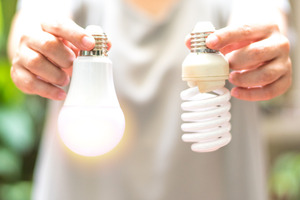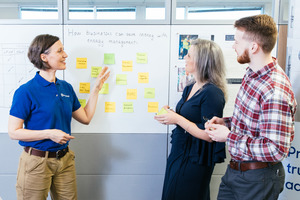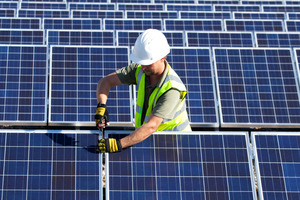Welcome to Business Energy Savings Training
Congratulations on starting your sustainable energy journey! Ready for higher productivity, increased profitability and a cleaner, more efficient work environment?
In this free, on-demand video series from TVA EnergyRight, you’ll find industry-specific research, guidance and resources to help you lower costs and reach your organization’s energy goals. Watch them all or skip to the videos and sections most applicable to your business.
Thanks again for investing in your company's future with TVA’s Business Energy Savings Training.

Content created and supplied by NEEA through a limited license agreement with TVA.
Section 1
First Steps & Engagement
Energy efficiency is key to maintaining a competitive advantage. See how online Strategic Energy Management (SEM) can help you get organized and reach your energy goals.

How to Use Online SEM Training
Discover the benefits of Strategic Energy Management (SEM)—a systematic approach for reducing energy consumption and improving process efficiency across your organization.

How to Form an Energy Team
Explore the benefits of building an effective energy team. This is the team you can turn to for support, implementing new energy initiatives, and sharing company-wide communication.

How to Find Free Help or Hire Professionals
Identify many of the energy-related organizations and resources available to you. Stretch your budget by starting with organizations that provide free or reduced-cost energy guidance.

How to Create Awareness and Support
Discover simple and effective strategies for communicating important energy goals with the rest of your organization.
Section 2
Understanding Data
It’s time to crunch the numbers. In this section, you’ll learn how to establish an energy baseline, convert energy into common units of measure, and hone in on your organization’s Significant Energy Uses (SEUs).

How to Get and Record Energy Data
Think of your baseline as a “before” snapshot of your energy usage. Once you’ve made changes, your baseline becomes a reliable way to track improvements.

How to Convert Measurements to Common Units
Compare various types of energy by converting each into a common unit of measure, such as the British Thermal Unit (BTU).

How to Translate Data Into Performance
Calculate and chart historical energy data for your organization. Having an accurate starting point before ramping up your energy projects will save you time and money in the long run.*

How to Manage the Energy That Matters Most
Reduce waste by focusing your efficiency efforts on high-impact areas. This step-by-step process will help you identify and improve your organization's Significant Energy Uses (SEUs).*
Section 3
Identifying Opportunities
Once your data has been collected and charted, you're ready for the energy audit. In this section, you’ll also learn how to develop goals and action plans, estimate project costs, and track your progress with Key Performance Indicators (KPIs).

How to Perform an Energy Audit
Energy audits are an important first step in meeting and maintaining your efficiency goals. A reliable energy assessment will help you prioritize projects and detect any issues.

How to Set and Achieve Energy Goals
Discover why better energy goals lead to better energy outcomes. Creating and coordinating well-defined goals now will help you meet—and possibly exceed—your organization's energy savings later.

How to Choose the Best Energy Projects
Follow a step-by-step process designed to help you evaluate and select the best energy projects for your organization.
*Always check for EnergyRight financial incentives to help offset costs before you move forward.

How to Estimate Costs for Energy Projects
Use simple accounting methods to estimate the cost of your chosen energy project. If you have multiple projects lined up, this method will help you prioritize which project you should implement first.

How to Choose Key Performance Indicators
Track your progress using KPIs, or Key Performance Indicators. These metrics will help you monitor energy consumption and establish measurable results.
Section 4
Implementation & Continuous Improvement
As with any workplace improvement project, safety should be a top priority. In this section, you’ll learn more about implementing safety protocols, writing an effective energy policy, and the ongoing process of monitoring and adjusting your plans.

Safety Awareness Implementing Energy Projects
Review the importance of safety procedures and examine any potential hazards that could arise when implementing energy projects.

How to Write an Energy Policy
Learn more about creating an energy policy for your organization. This can be as simple as a company-wide announcement stating your commitment to conserving energy and improving efficiency.

How to Monitor, Target, and Report Performance
Identify and report your organization's energy-use bright spots—and trouble spots—with these helpful monitoring techniques.

How to Improve Through Operations and Maintenance
Discover how routine maintenance can eliminate costly leaks, prolong the life of your equipment, and improve your return on investment.
Additional Resources

ENERGY STAR® Portfolio Manager®

Strategic Energy Management

